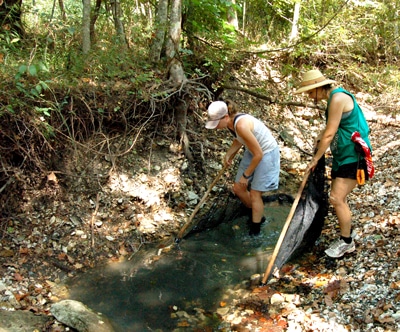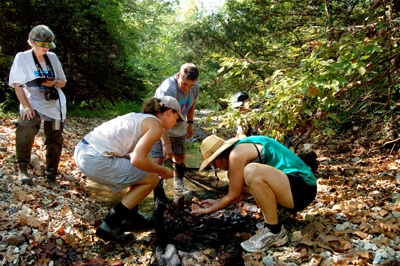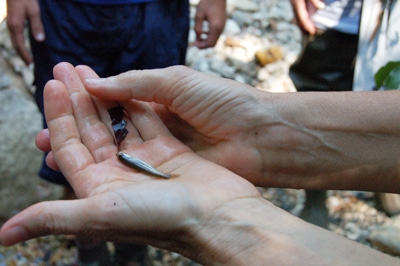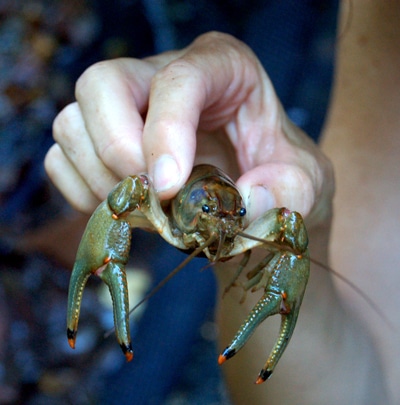Cedar Hollow Blue Thumb Fish Collection

Blue Thumb staff performed fish collection at Cedar Hollow Creek near Tahlequah on Aug. 9, 2010. Accompanying Blue Thumb’s Cheryl Cheadle, state coordinator; Kim Shaw, education coordinator; and Bill DeShazo, part-time employee, were Blue Thumb monitoring volunteers Gary and Elaine Wickham who regularly monitor the stream. Nick Shepherd, Blue Thumb intern, and Mark Harrison, OCC public information officer, also participated.
Fish have different tolerance levels to pollutants and habitat changes, making them good indicators of stream health. Fish collections are made from Blue Thumb-monitored streams in summer every four or five years, usually between July and October. A 400-meter reach of the stream is seined, and fish species are both recorded and collected.

At the same time a fish collection is made, volunteers and staff members perform a habitat assessment of the stream. Information such as stream depth and width is recorded at set intervals. The type of stream substrate is noted, and whether or not there exists “cover” for fish, like logs in the water, undercut banks, or rock ledges. The amount of shade over the stream and stream bank condition is documented.

The weather had been extremely dry in the area preceding the fish collection on Aug. 9. Most of the water flowing through Cedar Hollow Creek at the time was traveling subsurface, but there was enough water flowing and pooled up in places for the sampling to proceed.

“It’s pretty rare to have as little water during a fish collection as we had on the Cedar Hollow site that day,” Cheadle said.
Another indication of stream health is taken from the collection of benthic macroinvertebrates, which are performed each year in summer and winter. Macroinvertebrates are creatures that live in the water such as insects, snails, worms, and leeches. Often the insects do not look familiar to us, because most of the insect life in the stream is in larval form, meaning they are not yet adults. As adults, most will fly away and simply then use the stream to lay eggs and begin the life cycle over. Some need high levels of dissolved oxygen and virtually no pollutants to thrive. Others might be found in almost any water.
